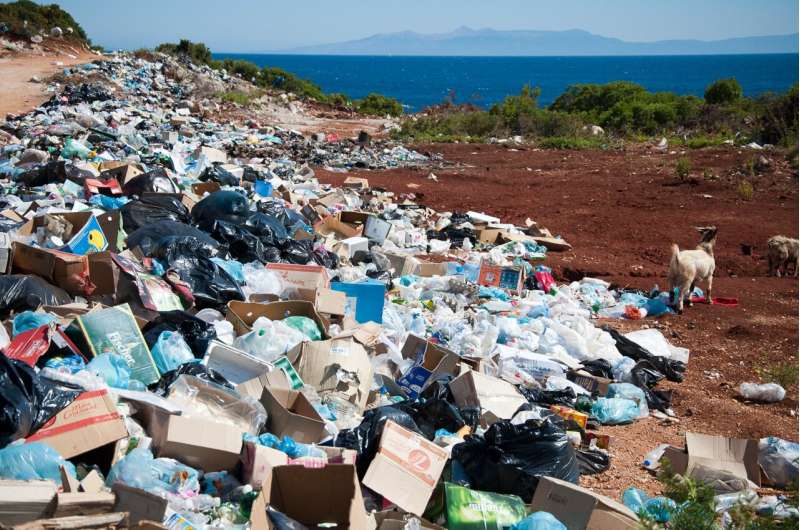Microplastics found in Nile River's tilapia fish

The Nile is one of the world's most famous rivers. It's also Africa's most important freshwater system. live in the 11 countries it flows through. Many rely on its waters for agriculture and fishing to make a living.
The Nile's two main tributaries, the Blue Nile and the White Nile, come together in Sudan's capital city, Khartoum. This industrial hub has .
The Nile is not immune to the same pollutants that affect rivers all over the world. Plastic debris is of particular concern. Over time, plastics break down into smaller pieces known as microplastics. These are tiny plastic particles with a maximum size of five millimeters, all the way down to the nanoscale. found that
"rivers are modeled to export up to 25,000 tons of plastics from their sub-basins to seas annually. Over 80% of this amount is microplastic."
This has huge negative consequences for biodiversity and the climate. As microplastics degrade, scientists have found, they . Airborne microplastics may influence the climate by scattering and absorbing solar and terrestrial radiation, depending on particle size, shape and composition. It also negatively affects . Microplastics in laboratory studies to be toxic to animals and cells.
Much of the research about microplastics in African waters has focused on marine and coastal areas. To address this gap, I to assess the presence of microplastics in the River Nile in Khartoum. My students and I tested for the presence of microplastics in Nile tilapia. This popular African freshwater fish species of commercial fisheries in many African countries, including Sudan.
The results do not make for happy reading. In the 30 freshly caught fish we surveyed, we found a total of 567 microplastic particles. This shows that the River Nile is contaminated with microplastics that can be consumed or absorbed in various ways by the tilapia and other aquatic organisms.
Our sample
The fish used in our study were caught just after the meeting point of the two Niles, known in Arabic as Al-Mogran.
We visited the Al-Mawrada fish market in the Omdurman area, which is also alongside the Nile. All 30 specimens we bought were freshly caught.
We dissected the fish to remove their digestive tracts. The individual tracts were treated so they would digest any organic matter they contained without interfering with the analysis of microplastics. The resulting solution was subject to another extraction procedure and we then conducted physical and chemical analyses.
Every specimen had microplastics in its digestive tract.
The number ranged from as few as five to as many as 47 particles per single fish. In total, we identified 567 particles. This is high compared to that have in tilapia species in other rivers and lakes. There is, as yet, no global guideline or standard for what might be an "acceptable" number.
Shape, size and color
We detected different sizes of microplastics (0.04mm to 4.94mm), shapes (fibers, fragments, films, foams and pellets) and colors. The most common were very small (less than 1mm), fibrous—they appear slender and elongated—and colored (dyed).
These characteristics make sense because of how fish and other aquatic organisms feed. Nile tilapia are versatile feeders: they consume a variety of organisms including phytoplankton, aquatic plants, invertebrates, detritus, bacterial films, as well as other fish and fish eggs. That puts them at a high risk of ingesting microplastics.
Nile tilapia are also more likely to consume particles that are within a similar size range as their natural prey, as well as the same shape and color.
Smaller microplastics are especially good carriers for other pollutants such as heavy metals, resulting in additional health risks. Their small size also makes it easier for them to move into organs like the liver. Studies have found microplastics in the tissues, muscles, livers, blubber and lungs of other as well as .
Fibers, the most dominant shape found in our specimens, stay in the intestine for longer than other microplastic shapes. This, too, can lead to health problems for the fish. Colored microplastics contain dyes, many of which .
This all has serious implications for human health, as people catch and eat the fish, which introduces those .
Pollution sources
Where does all this plastic originate? For starters, 65% of plastic waste in Khartoum is disposed of in . From there, it contaminates water bodies and other parts of the environment.
The city's wastewater treatment system is ineffective. The three wastewater treatment plants in Khartoum state, Karary, Wd-Daffiaa and Soba, are outdated and . That means untreated effluent from domestic, industrial and agricultural activities is another probable source of microplastic pollution.
There are also countless recreational sites along the River Nile in Khartoum. The Nile Street is the most popular in the capital city, hosting water sports, restaurants, cafes, clubs, event venues and hotels, as well as the tea ladies (women who serve hot beverages from makeshift mobile cafes along the banks of the river). However, waste disposal and collection practices are sorely lacking, so plastic litter from these leisure activities leaks into the river.
No easy fix
Tackling microplastic pollution is not easy. It will require technological advances, as well as the collective efforts of consumers, producers, governments and the scientific community.
As consumers, we need to change our behavior around plastic products, especially single-use plastics. For example, opt for fabric shopping bags instead of plastic bags; use glass and metal containers. Recycling is also important.
Governments must enforce waste management regulations and improve waste management practices, as well as helping to improve public awareness. Strategies and policies must explicitly feature microplastics.
Scientists can not only fill the knowledge gaps around microplastics. Communicating scientific findings is crucial; so too is developing innovations to protect against microplastics and their harmful effects.
Provided by The Conversation
This article is republished from under a Creative Commons license. Read the .![]()

















